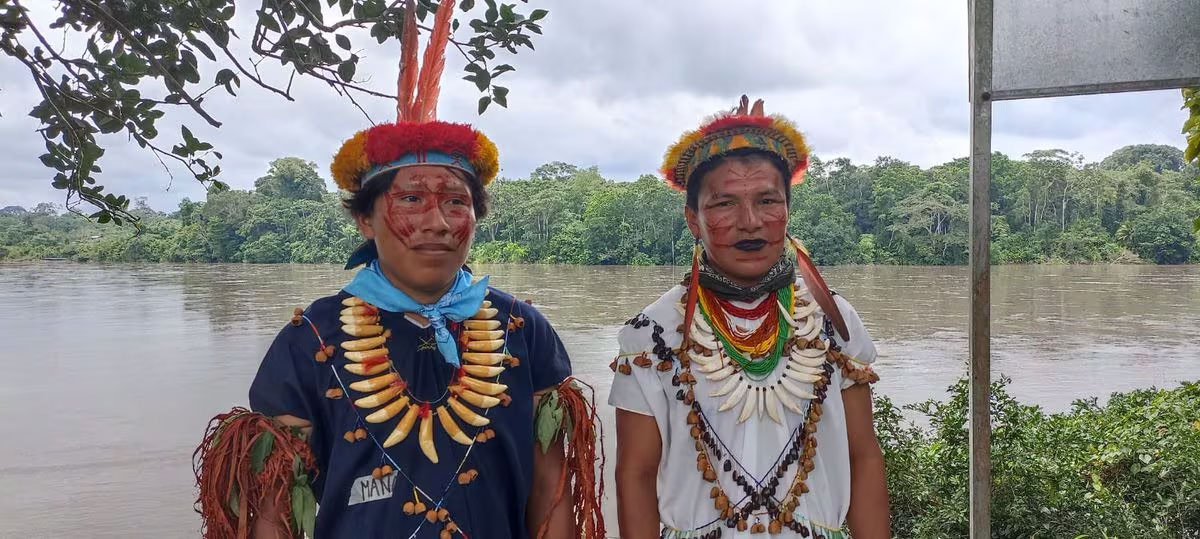The justice system in Ecuador has acknowledged the rightful ownership of 42,360 hectares in Pë’këya by an Amazonian community. This region encompasses significant sacred sites for the tribe.
In a groundbreaking ruling, the Ecuadorian justice system has affirmed the Siekopai people’s rightful ownership of 42,360 hectares in Pë’këya, a territory within the Amazon rainforest. This momentous decision, issued on November 24th, marks a significant historical milestone for the Siekopai Nation, allowing them to reclaim the land from which they were expelled in 1941 due to the Ecuadorian-Peruvian War.
The judicial decision, the second related to this case, is hailed as “historic” by Justino Pianguaje, the head of the Siekopai Nation. For the first time, Ecuador acknowledges an Indigenous population’s right to own a territory declared a protected area. This legal precedent has the potential to empower other Indigenous communities seeking to regain control of their ancestral lands.
Ruling sets precedent
The 2008 Constitution of Ecuador initially recognized the right of Indigenous communities to maintain possession of ancestral lands, with an exception for spaces within the National System of Protected Areas. However, a pivotal development occurred in 2017 with the approval of the Organic Law of Rural Lands and Ancestral Territories, which paved the way for the return of protected spaces to their original owners. The Siekopai’s legal victory sets a precedent for Indigenous land rights and challenges historical injustices.
The Siekopai, totaling around 720 people in Ecuador and over 1,000 in total when considering members residing in Peru, have struggled for over 80 years to reclaim Pë’këya. The court not only granted ownership but also mandated a public apology from the Ministry of Environment, Water, and Ecological Transition of Ecuador for failing to fulfill its obligations in guaranteeing the rights of the Siekopai Nation.
Justino Pianguaje emphasizes the profound significance of reclaiming Lagartococha, stating, “This piece of land is what will allow us to continue existing as an ancient people, as a people who have shown that we are Amazonian, with a different culture, a different wisdom, and a different language.”
The connection between the Siekopai people and their land is intrinsic to their identity and survival. Maruja Payaguage articulated this sentiment during the court proceedings, stating that their desire to return is not merely about the physical land but a spiritual necessity. The ruling acknowledges the elders’ suffering and the generational impact of being denied access to their sacred territory, preventing them from fulfilling cultural and spiritual rituals.
The court’s decision not only acknowledges the Siekopai’s historical ties to the land but also underscores the importance of preserving their cultural practices, traditional knowledge, and unique worldview. The court recognizes that certain practices, such as knowledge about plants, fishing, hunting, goldsmithing, and ritual practices, are intrinsically tied to the Pë’këya zone.
Jesuit documents helped prove ownership
The Siekopai’s legal battle required proving their status as the original inhabitants, a challenge given their oral tradition. However, Jesuit documents, including an anonymous manuscript from 1753 preserved by the New York Public Library, played a crucial role in establishing their historical presence in Lagartococha.
Of the original 100,000 hectares comprising Lagartococha, the Siekopai have recovered just over 40%, but this portion includes the most sacred sites for the community. These sites, including Ñañokomasira and the sacred river Emuña, hold deep cultural and spiritual significance for the Siekopai, reflecting their unique relationship with the land.
The legal victory also addresses the threats, harassment, and obstacles the Siekopai faced in their quest to return home. The court acknowledges that militarization of the border and the creation of the Cuyabeno Wildlife Reserve contributed to the challenges the Siekopai encountered in reclaiming their territory.
This triumph for the Siekopai Nation is not just a legal victory but a cultural resurgence and a testament to the resilience of Indigenous communities. The ruling sets a precedent for recognizing and rectifying historical injustices against Indigenous peoples, emphasizing the importance of upholding their land rights for cultural preservation and survival.
In celebrating this historic moment, Justino Pianguaje expresses internal peace and envisions a future where the Siekopai people can thrive without the looming threat of extinction. The Siekopai Nation’s struggle for over eight decades has culminated in a landmark legal victory that not only restores their land but also reaffirms their cultural identity and secures a future for generations to come.


This is very wonderful!!! Good for Equador. Honoring others is honoring God as we are made in his image.Great job people!!!
Muy Bueno
I am so happy that they are getting some of their land returned to them. I wish the US would do the same for the native Americans there.